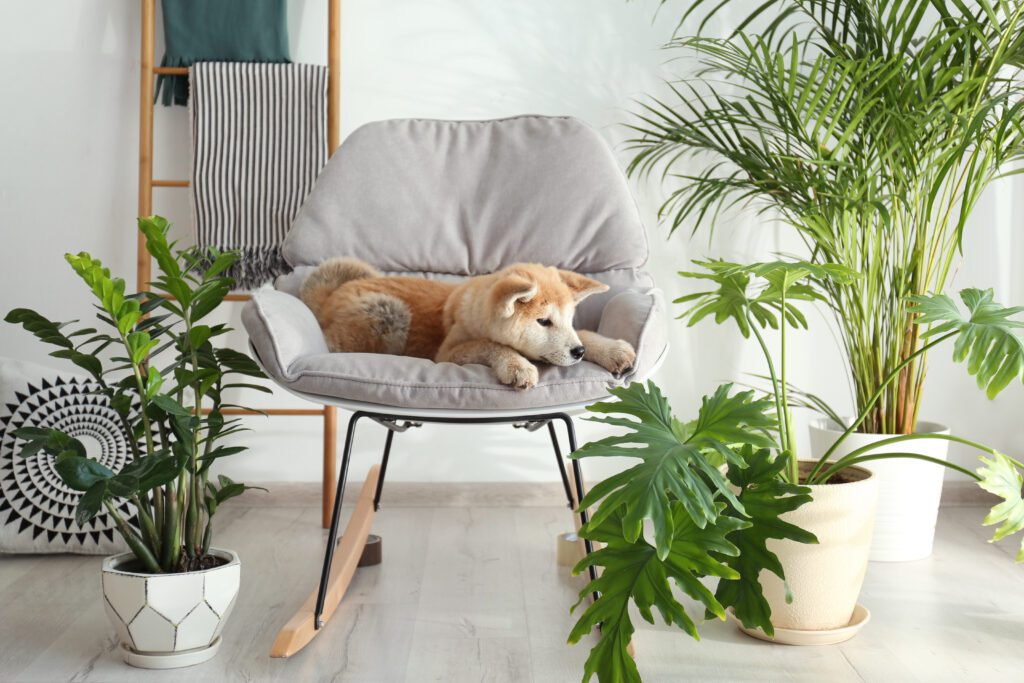Pet-Friendly Houseplant Guide: Safe Greenery for Your Furry Friends
Create a Pet-Safe Indoor Garden with These Green Houseplant Picks
Houseplants add beauty, fresh air, and serenity to any living space. But if you share your home with curious cats or playful dogs, choosing the right greenery becomes more than an aesthetic decision—it’s a matter of safety. Many popular houseplants are toxic to pets and can cause anything from mild irritation to serious health concerns. The good news? There’s a long list of vibrant, pet-safe options to brighten your home without putting your furry companions at risk.
Creating a thriving, pet-safe indoor garden is all about planning ahead and knowing which plants to trust. With the right mix of greenery, smart placement, and thoughtful care, you can enjoy all the benefits of indoor gardening while ensuring your pets stay safe and happy.
This comprehensive guide covers everything from the best pet-friendly plants to tips on keeping your plants thriving and your pets out of trouble. Whether you’re an indoor jungle enthusiast or a first-time plant parent, this guide is for you.
Why Pet-Friendly Plants Matter
We all want a peaceful home where every family member—human or animal—can feel safe. Unfortunately, some of the most common indoor plants, such as lilies, pothos, and philodendrons, can be toxic if ingested by pets. Symptoms of plant poisoning include vomiting, diarrhea, drooling, and lethargy. In serious cases, it can lead to organ damage or worse.
Choosing pet-safe plants helps you:
- Prevent unnecessary vet visits and medical emergencies
- Maintain peace of mind knowing your home is safe for all
- Encourage a healthier, more holistic indoor environment
Top Pet-Friendly Houseplants to Grow at Home
Each of the plants below has been vetted for safety by experts and listed as non-toxic by reputable sources like the ASPCA.
1. Spider Plant (Chlorophytum comosum)
Known for its arching green leaves with white stripes, the spider plant is a classic favorite. It’s safe for pets and easy to maintain, thriving in indirect sunlight and requiring minimal watering. Plus, it purifies indoor air.
2. Boston Fern (Nephrolepis exaltata)
Lush and full, Boston ferns love humidity and filtered light. Hang them in bathrooms or kitchens to help them flourish, and enjoy their graceful fronds without worrying about your cat or dog.
3. Areca Palm (Dypsis lutescens)
This tropical plant adds vertical flair to any room. Also called the butterfly palm, it’s entirely safe for pets. It prefers bright, indirect light and consistent watering.
4. Calathea
With bold patterns and vibrant foliage, calatheas make a visual statement. They’re non-toxic and thrive in low to medium light and high humidity. Calathea orbifolia and Calathea medallion are popular varieties.
5. Parlor Palm (Chamaedorea elegans)
Elegant and slow-growing, the parlor palm is a great starter plant. It tolerates low light and irregular watering—perfect for beginners and safe for pets.
6. Prayer Plant (Maranta leuconeura)
Named for the way its leaves fold at night, the prayer plant is a fascinating addition to any pet-friendly home. It needs bright, indirect light and moist soil.
7. Haworthia
If you love succulents, the Haworthia is your go-to. These compact plants are easy to care for, non-toxic to pets, and perfect for windowsills that get a lot of light.
8. Baby Rubber Plant (Peperomia obtusifolia)
Thick, glossy leaves and a compact form make this peperomia variety a charming addition. It’s safe for pets, tolerates medium light, and doesn’t need frequent watering.
Tips for Keeping Pets and Plants Happy
Even with non-toxic plants, there are still good practices to ensure harmony between pets and your greenery.
- Use elevated planters or shelves: Keeps plants out of reach from curious paws.
- Distract your pets: Provide toys, playtime, and scratching posts to redirect energy away from your houseplants.
- Choose heavy pots: Heavier containers are less likely to tip over if nudged.
- Avoid toxic fertilizers: Stick to pet-safe options when feeding your plants.
- Observe interactions: When bringing in new plants, supervise your pets to ensure no unwanted behavior develops.
How to Create a Pet-Friendly Indoor Jungle
Designing a plant-filled home that’s also safe for pets takes a bit of planning—but the results are well worth it. Plants have been shown to boost mood, purify air, and add vibrance to living spaces. But when you have animals at home, there’s an extra layer of care involved. From chewing to digging to tipping pots, pets and plants often clash. Thankfully, you don’t have to choose one over the other.
By setting up your space intentionally, you can enjoy a lush, green home without putting your four-legged friends in harm’s way. It’s all about choosing the right plants and placing them where they can thrive while staying out of reach.
If you’re an aspiring plant parent with pets, here’s how to set up a thriving plant zone in your home:
- Designate a “plant zone” in your home that’s separate from pet play areas.
- Use hanging planters or window ledges for plants that need more sunlight and distance from pets.
- Incorporate pet-safe herbs like basil, thyme, or catnip for a dual-purpose indoor garden.
- Rotate plants seasonally to refresh your space and align with growth cycles.
Benefits of Pet-Friendly Houseplants
Choosing plants that are safe for pets doesn’t mean compromising on style or function. In fact, it opens the door to a more harmonious living space where both you and your furry friends can feel at ease. With the right plant selections, your home becomes a sanctuary filled with life and peace of mind.
- Improved indoor air quality: Many plants help filter out toxins and pollutants.
- Stress relief: Houseplants can reduce stress levels and promote calm.
- Enhanced aesthetic: Plants bring life, color, and personality to your space.
- Better humidity: Especially in colder seasons, plants help balance indoor moisture levels.
Common Questions About Pet-Friendly Plants
Can I have plants if my dog eats everything?
Yes, you absolutely can still have houseplants—even with a mischievous pup who likes to nibble. The key is choosing non-toxic varieties and placing them strategically. Use hanging baskets, tall shelves, or closed terrariums to keep greenery safely out of reach. You can also try applying pet-safe deterrent sprays that make the leaves taste unpleasant. Training plays a big role as well—teach your dog which areas are off-limits using positive reinforcement techniques. Finally, consider giving your dog plenty of toys and stimulation to keep them occupied and away from your plant setups.
Are succulents safe for pets?
Some are, and some are not. Haworthia is a great example of a safe succulent, while others like jade plant, aloe vera, and certain types of euphorbia are toxic to pets. These toxic varieties can lead to symptoms like vomiting, diarrhea, and lethargy if ingested. If you love succulents, stick with those that are confirmed safe and always verify their scientific names. Consider placing even non-toxic varieties in elevated or inaccessible spots to avoid accidents, especially if your pets are particularly curious.
Is it safe to use plant food?
Fertilizers and plant food can be hazardous to pets, especially if they contain synthetic chemicals. Pets may be tempted to sniff, lick, or chew recently treated soil or leftover granules. To minimize risk, opt for organic or pet-safe fertilizer products made from natural ingredients. These are less likely to cause harm if accidentally contacted. Also, store all plant care products securely out of reach, and avoid over-fertilizing. A safer approach is to fertilize while pets are outside or in another room, allowing the product to absorb into the soil before they’re allowed near the plant.
Resources for Pet Owners
Before adding any plant to your home, double-check its safety through the ASPCA’s list of toxic and non-toxic plants. It’s updated regularly and offers a reliable reference for pet households.
Storage Tip for Plant Lovers
As your houseplant collection expands, so does the need for room to grow—literally. If you’re finding it hard to navigate around plant stands, shelves full of pots, or sunlight-blocking clutter, it may be time to reassess how you’re using your space. A thriving indoor garden should feel peaceful and breathable, not cramped or chaotic. One of the most effective ways to free up square footage is by temporarily storing non-essentials. Whether it’s furniture you’re not currently using, off-season decorations, or bulky items that take up floor space, a secure self storage unit can provide the relief your home needs.
Think of your indoor garden like any other home project—it benefits from planning and room to flourish. By removing unnecessary items and giving your greenery some breathing room, you’ll be able to maintain a more organized and pet-friendly environment. It’s a simple solution that can transform both your plant care routine and the overall look and feel of your space.
Storage Solutions for a Growing Indoor Garden
As your plant collection grows, so does the need for thoughtful space management. Guardian Storage offers flexible and secure storage unit options that are perfect for plant lovers looking to simplify their indoor environments. Whether you need to store extra shelving, furniture you’ve rotated out, or seasonal décor to make way for greenery, we’ve got a space solution tailored to your needs.
Our climate-controlled units help ensure that your belongings stay protected year-round, and our month-to-month leasing options give you the flexibility to store items only when you need to. Give yourself the freedom to create a clean, open space that both you and your plants—and pets—can enjoy.





